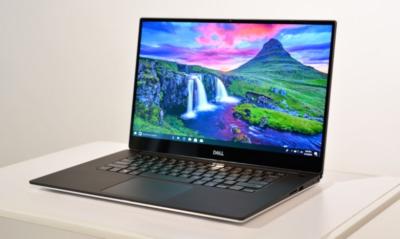The 2019 OLED laptops are now shipping, all with the same display, an SDC 15.6" 4K (3840x2160) AMOLED.

Reviewers from Notebook Check tested the Dell XPS 15 7590 OLED laptop to see how the power consumption of the display changes with the content used.
At maximum brightness, an all black image consumes just 5.47W (same as at minimum brightness, basically). An all white image uses 18.97W of power. The reviewers also tested color displays: an all green image takes 10W, an all red 11.15W and an all blue consumes 13.24W.
I would have assumed that the difference between a blue (fluorescent based) and a red or green image will be larger, but remember that the display also consumes quite a bit power at an all black image so the percentage difference between blue and green or red is larger.
Interestingly, at the minimum brightness setting, there is almost no difference between the different colors. I am not sure how dark exactly is the OLED display at the lowest setting.
With LCD displays the colors or image do not matter at all - the only important variable is the brightness. According to Notebook Check, their LCD test (probably in a similar Dell with an LCD display) shows that the difference between maximum brightness and minimum brightness is 6W.
All this means that unlike an LCD laptop, with an OLED laptop you can conserve more power by not just setting the display to a lower brightness, but also by different colors shown - so dark modes in applications make sense.
The Dell XPS 15 2019 professional laptop is available starting at $1,799 for the OLED models.
Comments
Hello Douglas, thanks for finding the two repeated paragraphs, I fixed that. I actually referred a different article (link above).
I would assume that the OLED monitors would use pretty much the same power per area, yes. But this depends on the OLED monitor producer and the OLED materials/architecture used (for example I would guess JOLED's panel power consumption will be different to SDC's).


Hello,
is this the link to the article you reference?
https://www.notebookcheck.net/Power-Overwhelming-Dell-XPS-15-7590-Core-i9-and-GeForce-GTX-1650-OLED...
the last two paragraphs of your post are repeats of the two paragraphs before them.
btw. thankyou for the interesting information, that source article is to dense for me to analyze :)
Question:
how does the larger surface area of oled monitors measure up to the current oled laptop displays in terms of power consumption, is it practical to just work out a surface area and scale linearly?